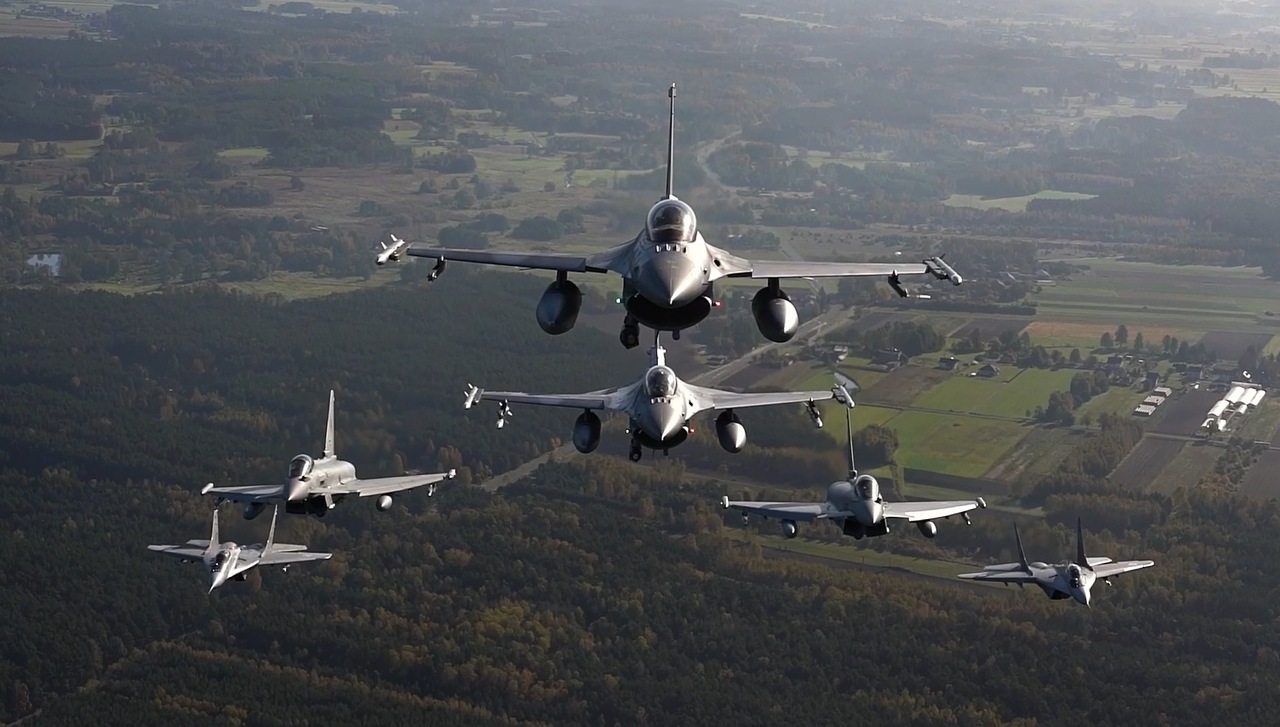Russia Working on New Space-Based Anti-Satellite Capabilities
According to information from the U.S. Congress and administration, Russia is progressing with work on a new nuclear anti-satellite weapon. The revelations are partial and do not explain how this space system with a nuclear warhead or nuclear propulsion would work, however either path if achieved would increase the threat to both military and civilian satellites, and not only of the U.S. Further progress in this area by Russia might also be a violation of international treaties not permitting nuclear weapon tests in outer space.
 Nasa/Nasa / Zuma Press / Forum
Nasa/Nasa / Zuma Press / Forum
On 14 February, the chairman of the U.S. House Permanent Select Committee on Intelligence appealed to President Joe Biden to de-classify an intelligence report on a “serious national security threat”, clarifying to others in Congress that it is related to Russian “destabilising military capabilities”. These and other leaks about a new space nuclear weapon or military system with nuclear propulsion resulted in further speculation about the Russians’ capabilities and intentions in space. Soon after the leaks came to light, a White House spokesman stated that the Russian threat is not a fractional orbital bombardment system (FOBS) and indirectly confirmed that it is a new anti-satellite weapon system (ASAT). Russia denied this, and presented the reports as manipulation aimed at spurring a vote in Congress on further military assistance to Ukraine.
Russia’s Approach to ASATs
Russia sees ASAT systems as an important element of its strategic arsenal that would be used in a major conflict with the U.S. and NATO. The Alliance’s armed forces and advanced global economy are highly dependent on numerous satellites. Today, more than 8,000 military, civilian, and dual-use satellites are operating low Earth orbit (between 200 km and 2,000 km altitude), and small numbers of military and intelligence satellites are operating at higher altitudes in geostationary orbits. Russia sees these assets as potential weak points for the West and is investing in various ASAT systems, although the majority of them comprise a continuation of Soviet projects.
Russia, in parallel with the preparations for the invasion of Ukraine, in November 2021 tested an A-235 Nudol ASAT missile against one of its inactive satellites: the destruction of the craft left 1,700 pieces of debris in the low Earth orbit, threatening other satellites and manned space stations. During the first days of Russia’s full-scale war, it also conducted cyberattacks on Viasat terminals used by the Armed Forces of Ukraine. Russia is also intensively using electronic jamming of Ukrainian satellite communication and navigation, as well as jamming the Western-operated GPS signal in the vicinity of the Kaliningrad region. In autumn 2022, Russian diplomats also declared that Russia considers dual-purpose satellites to be “legitimate targets for military retaliation”, which was interpreted as a threat to Starlink, a satellite constellation providing data services to Ukraine.
ASAT and Other Russian Projects
Research and development of a “nuclear ASAT” should be seen in the context of Russia’s other strategic systems, which frequently are bypassing or violating arms control treaties. Among the few strategic systems supported personally by the president of Russia, especially interesting are projects with special, miniature nuclear propulsion, such as the Burevestnik cruise missile and Poseidon torpedo-drone, both long-range devices currently in testing. In 2018, together with these two systems, Russia presented a computer-generated animation of a FOBS attack launched from a RS-28 Sarmat heavy intercontinental ballistic missile, but so far there has been no confirmation that progress on such a system or tests have been conducted. Contrary to Russian claims, such a FOBS strike would not increase the chances for a surprise attack or used to defeat the very limited missile defence of the continental U.S. Even if these three strategic systems were not violations of the New START treaty, Russia suspended it anyway in February 2023. There is also the likelihood that some other secret Russian studies and experiments might be useful for new ASAT systems, such as new warheads with regulated and very low yields. Although the USSR before it and Russia have not tested warheads in the atmosphere or space since 1962, a decision to resume such testing became more likely after the Duma de-ratified the Comprehensive Test Ban Treaty in November 2023.
Russia’s New ASAT Options
Any available sensitive U.S. intelligence analysis is probably of a very technical nature, so there is also the possibility of misunderstandings in Congress. Of great importance here is the differentiation between a nuclear weapon and a nuclear-propulsion system (nuclear powered). In the first case, work on new nuclear weapon, Russia may be using options with already tested models of warheads. Delivery of these might be easily achieved by adapting the launcher and missiles of the Kontakt, Nudol, or S-500 systems, or by relatively simple “space mines” (the Soviets studied this kind of satellite). With already proved warhead models, Russia is not even forced to conduct a nuclear test, avoiding violating international law.
The second case might be that Russia is developing more revolutionary technologies of ASAT capabilities, including satellites, unmanned spaceships, or orbital stations with a nuclear reactor. This propulsion might result in greater manoeuvrability in space, which now is limited to classic chemical rocket propulsion. A craft that uses nuclear propulsion could easily change orbits, for instance shifting from low orbit to a geostationary position and back. A nuclear reactor might also be a large source of electricity with a volume not capable from solar panels and batteries. Such a huge source of energy could power lasers or electronic warfare means to blind sensors or damage important systems on enemy satellites. The USSR in 1987 tested but failed in its attempt to use the Polyus-Skiff orbital station with a mock-up of a laser, but Russia today could instead be using a new concept called a TEM Zeus space tug. This type of spacecraft is likely connected to some secret studies in 2018-2019 and a programme called Ekipazh. Zeus or a similar space tug could operate during peacetime as a civilian craft, engaged in missions of space debris collection at different orbits.
Implications for NATO
Any test of a Russian “nuclear ASAT” in either form could have serious effects in the space domain, named by NATO as an area of collective defence. Regardless of Russia’s intentions, there is no chance to hide a nuclear explosion or nuclear ASAT strike in space. Even a small-yield nuclear explosion (one to a few kilotons) at low Earth orbit would create a strong electromagnetic pulse destroying or disrupting the operations of thousands of satellites. The most vulnerable satellites would be civilian, usually operated without protection or safe systems in case of a nuclear explosion. On the other hand, only a high-yield nuclear test or attack (of a few to 10 Megatons) from a geostationary orbit could destroy U.S. satellites used for electronic intelligence and early warning systems—and NATO is very dependent on these. The danger of the electromagnetic pulse was one of the main reasons to conclude a treaty banning nuclear tests in space in 1963 (PTBT). Any nuclear test by Russia in space would also be a violation of the Outer Space Treaty (OST), banning the deployment of any nuclear weapons there.
Less clear are the implications of a nuclear-powered Russian ASAT in space. None of the treaties signed by Russia prohibits nuclear propulsion in space, and since the beginning of space exploration, nuclear power has been considered the best kind for long-term and deep space missions. Russia could present its new spaceship as a civilian one, disguising its manoeuvrability, ASAT, and other military missions. Such a nuclear-powered system would also pose a serious threat to NATO member satellites. Nevertheless, even if allied intelligence gains full insight into the Russian plans and operations, it could be difficult to prove the real purpose of an ASAT system without revealing the sources of information and losing some intelligence capabilities. In case of a Russian attack on the U.S. advanced intelligence and early warning satellites, its scale, nature, and impact could require retaliation, but the decision in case of a limited and short duration ASAT strike could be difficult for American civilian decision-makers to arrive at a response.
NATO deterrence of a nuclear ASAT system deployed by Russia will not be easy in the context of the level of secrecy concerning many U.S. military systems in space. For some allies, it would be very controversial should an American ASAT direct-ascent system be tested (the GBI and SM-3 interceptors are capable of this), with a huge risk of hundreds or thousands of pieces of debris in orbit. The U.S. could demonstrate some of the assumed capabilities of the X-37B space shuttle at different orbits, likely without a similar risk of debris as a kinetic ASAT. Moreover, if Russia in the near term (2024-2025) were to deploy in space any elements, a mock-up, or even a finished nuclear tug at a geostationary Earth orbit, it would be to demonstrate its lead over the U.S. and the Pentagon’s plans for the DRACO nuclear space tug, foreseen for 2026 at the earliest.
Conclusion
Available information suggests that U.S. electronic or human intelligence could gain deep insight into Russia’s research and development of a new ASAT. Despite already having a few ASAT models in its possession, Russia is working on a more advanced project that may feature a nuclear warhead or nuclear propulsion, which if used would pose more destructive capability. The technical details of the report are classified, but Russia seems to be working on a system that fits into its holistic and multi-layered approach to ASAT, as well as an exotic strategic system bypassing international arms control treaties, or terminating these agreements. Russia’s approach and plans might be very challenging to halt within the UN framework, even if the U.S. were to gain the full support of the EU, G7, China, and India. Because the civilian Roskosmos programmes are underfunded, most of its current and future missions can be suspected as military-related and possibly ASAT systems. Western attention should be paid to Russia’s next steps in space, such as accelerated work on super-heavy space launch vehicles or intensified operations by its inspection and service satellites. A clear indicator of Russia’s intention to develop a nuclear ASAT system would be the termination of the OST. New Russian capabilities would also require investments by NATO into some countermeasures and higher resilience dual-use satellites. The testing phase of Russia’s new space system could also provoke the development of analogous systems or other means by the U.S., and perhaps also by China, India, and France. Currently, the armed forces of NATO members should implement in their exercises and training scenarios operations with a disruption or total cut-off of satellite support.





